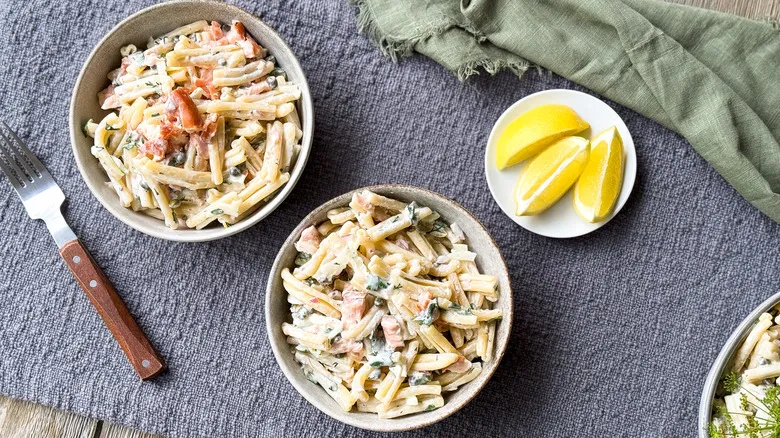Gather the salmon dill pasta salad ingredients
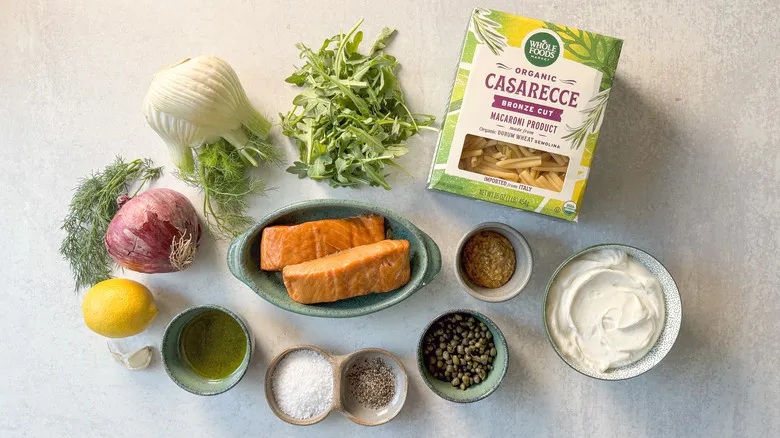
For this dish, select a dried pasta shape with twists and turns that can effectively hold the sauce, such as casarecce, cavatappi, fusilli, or gemelli. The curves and ridges help the sauce adhere while also providing a satisfying bite for the salad. For the sauce, gather whole milk plain Greek yogurt (low-fat is acceptable but won't deliver the same rich taste), fresh arugula, fennel bulb, extra-virgin olive oil, capers in brine, red onion, whole grain mustard, a clove of garlic, a lemon for both juice and zest, kosher salt, and freshly cracked black pepper for seasoning, along with a generous amount of fresh dill to impart the salad's distinctive flavor. Additionally, you will need approximately 12 ounces of hot-smoked salmon fillet.
Step 1: Mix the sauce for the salad
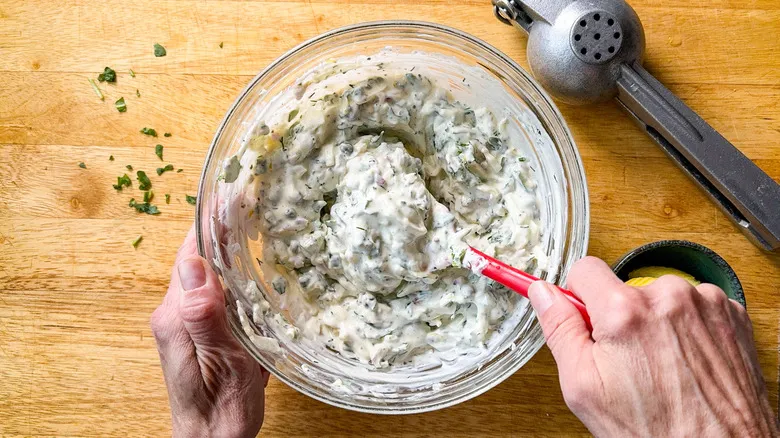
Combine the yogurt, arugula, fennel, 2 tablespoons of olive oil, dill, capers, onion, mustard, garlic, lemon zest and juice, 1 teaspoon of salt, and pepper in a bowl.
Step 2: Cover and refrigerate the sauce
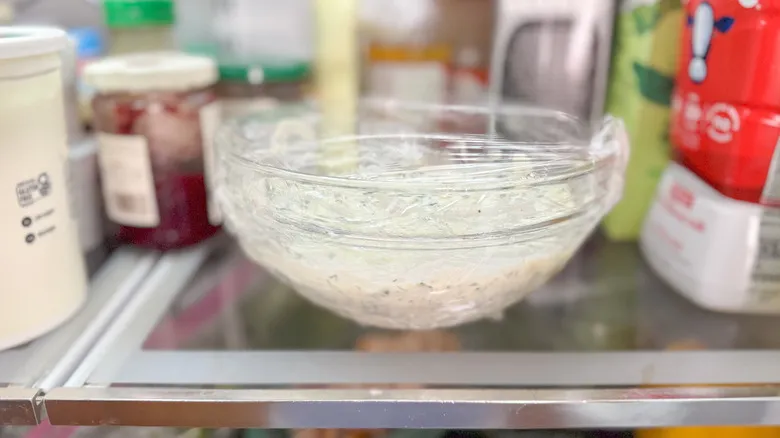
Seal the sauce and store it in the refrigerator until you're ready to use it.
Step 3: Boil water

Heat a large pot of water and add the remaining 1 tablespoon of kosher salt, bringing it to a boil.
Step 4: Cook the pasta
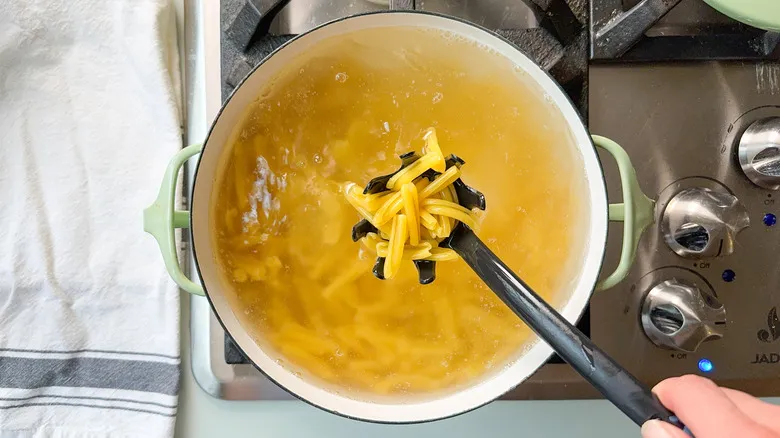
Incorporate the pasta and boil until it reaches an al dente texture (9–11 minutes, depending on the type of pasta).
Step 5: Drain and rinse the pasta
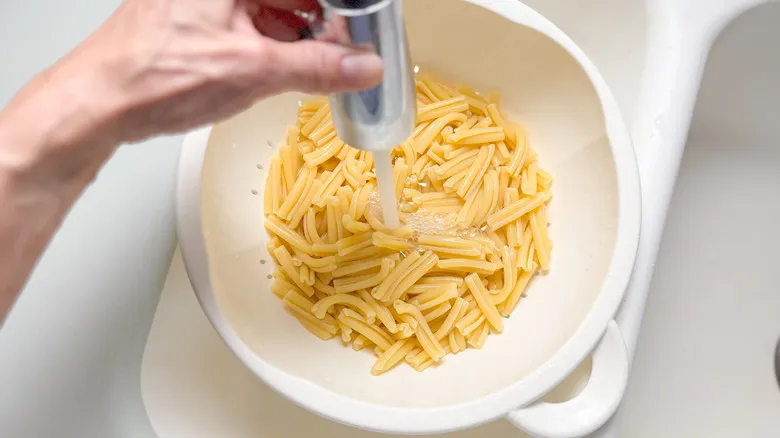
Strain the pasta using a colander and rinse it under cold running water to halt the cooking process.
Step 6: Toss the pasta with olive oil
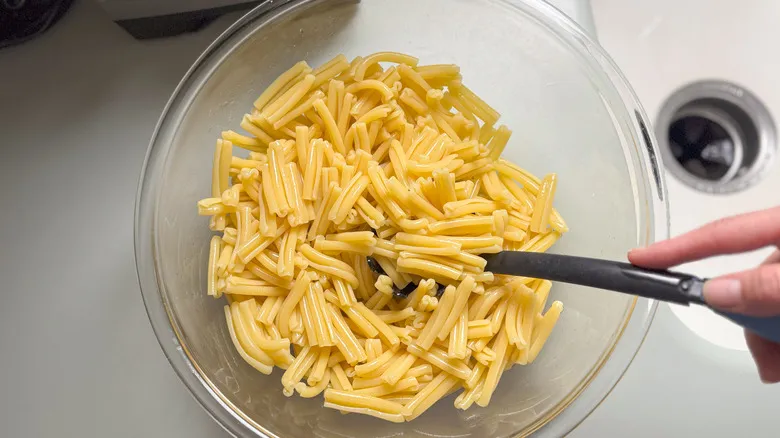
Move the pasta to a large bowl and mix in the remaining 1 tablespoon of olive oil. Set it aside.
Step 7: Prep the salmon
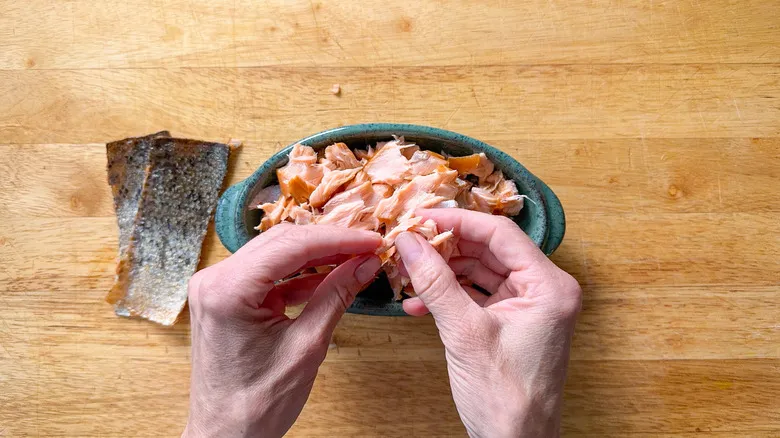
Take off the salmon skin and cut the salmon into small, bite-sized chunks.
Step 8: Mix together the pasta, sauce, and salmon

Carefully combine the pasta, sauce, and salmon until the pasta is evenly coated.
Step 9: Serve the salmon dill pasta salad
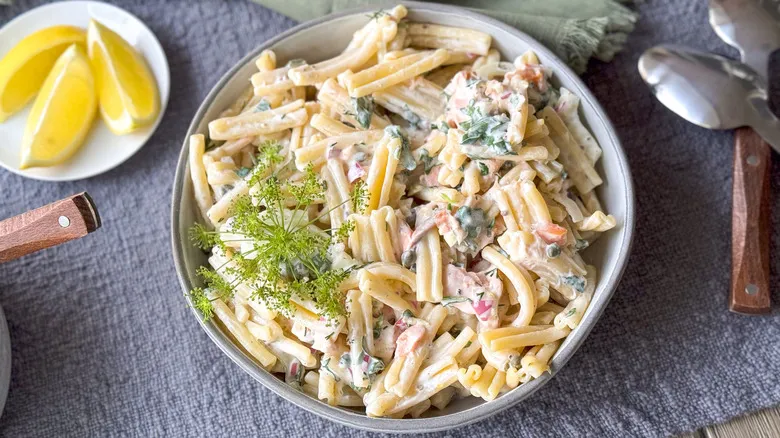
Serve the pasta salad right away or refrigerate it, covered, until you're ready to serve.
What is the difference between hot- and cold-smoked salmon?
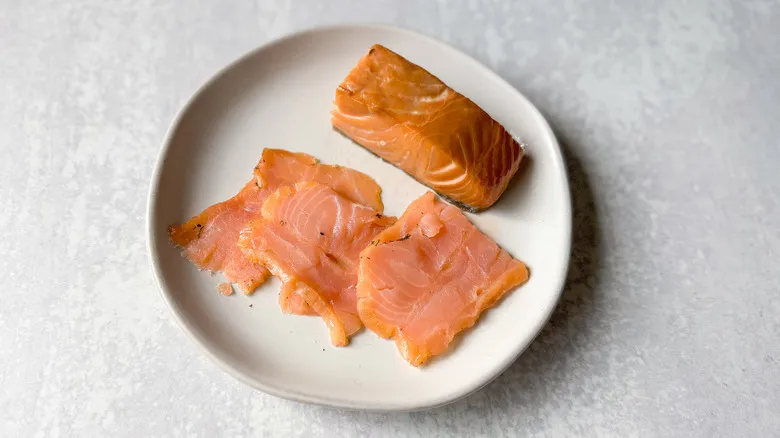
Not all smoked salmon is created equal, and temperature significantly influences the final outcome. Smoked salmon can be categorized as either cold-smoked or hot-smoked. Both methods begin with curing the salmon, which can be done using a dry rub or a wet brine. Kinnaird notes that for cold-smoked salmon, a dry rub rich in salt, often combined with sugar and various seasonings like pepper or dill, is applied to the fish. This process initiates cooking while extracting moisture from the meat. The salmon is then smoked at approximately 80°F, keeping it in a raw state with a texture akin to sushi-grade salmon. This variety of smoked salmon is silky and melts in your mouth, making it an excellent choice for garnishes or toppings.
In contrast, hot-smoked salmon is cured using a wet brine before being smoked at temperatures ranging from 120°F to 225°F. The internal temperature typically reaches around 140°F, resulting in a fully cooked product. This smoking method produces fish that flakes easily and boasts a rich, smoky flavor with a glossy exterior. It is perfect for dishes like pasta salad, as it maintains its shape while remaining moist and tender, adding a robust smoky flavor to the meal.
What are the best pasta shapes for pasta salad?

Pasta salad offers a wide variety of flavors and styles, and selecting the right pasta shape is crucial, especially in relation to the other ingredients. One key point to remember is to steer clear of fresh pasta for salads. While fresh pasta is delightful when cooked and served hot, its softer texture can lead to it breaking down and becoming mushy when mixed with dressing and juicy components.
Another vital factor is the size and cut of your vegetables, meats, or cheese. Kinnaird prefers to match the size and shape of her ingredients to the pasta, ensuring uniform bites by cutting the veggies or meat to a length that corresponds with the pasta shape. Additionally, the type of sauce or dressing used in the salad is important. Pasta shapes with ridges or curls help sauces cling better, enhancing the flavor of the pasta and creating a more cohesive dish. On the other hand, long string pastas like spaghetti or fettuccine can be challenging to work with, as the other ingredients struggle to stick, resulting in a disjointed flavor profile. For the best results, opt for bronze-cut pasta, which has a textured surface that allows for excellent sauce adherence!
Recommended
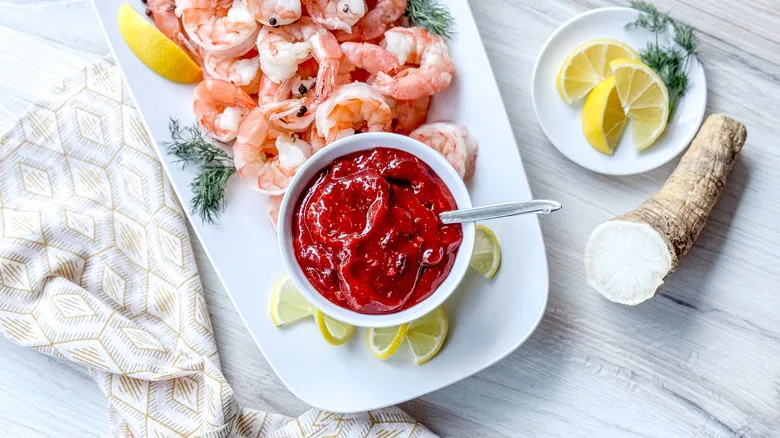
Scandinavian-Inspired Lingonberry Cocktail Sauce Recipe
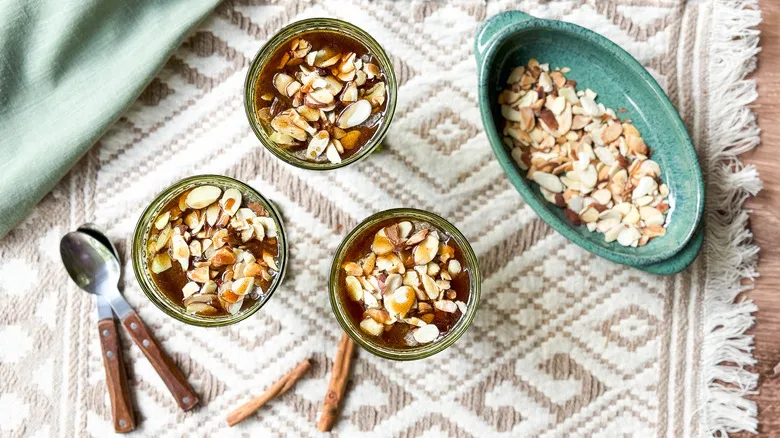
Almond Chai Chia Pudding Recipe
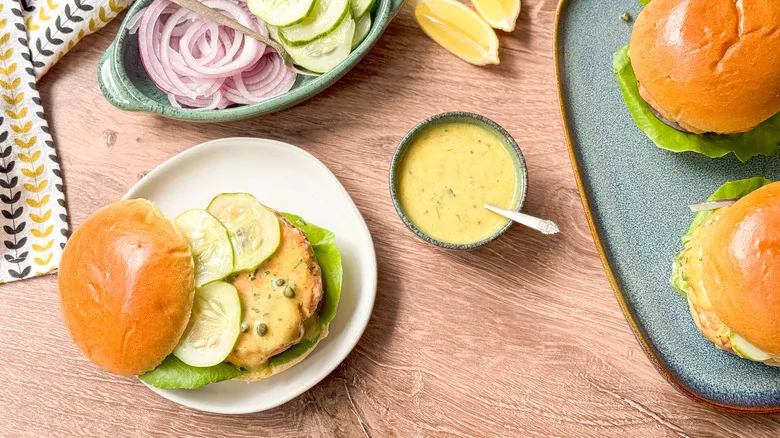
Broiled Salmon Burgers With Curry Remoulade Recipe
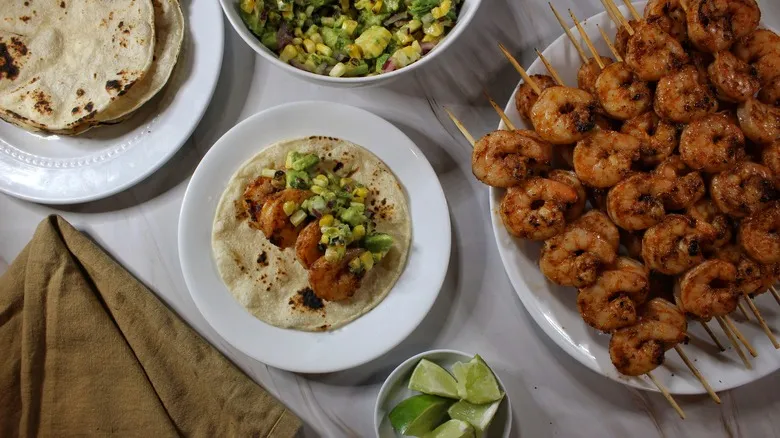
Grilled Shrimp Tacos With Avocado-Corn Salsa Recipe
Next up

